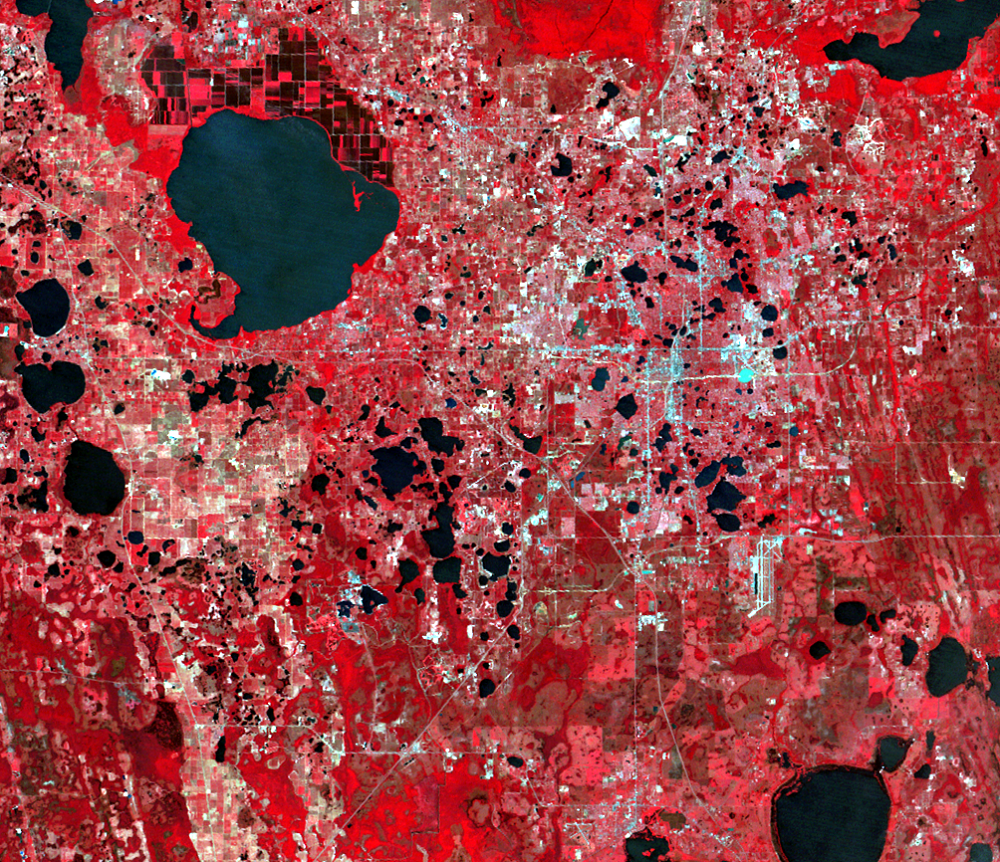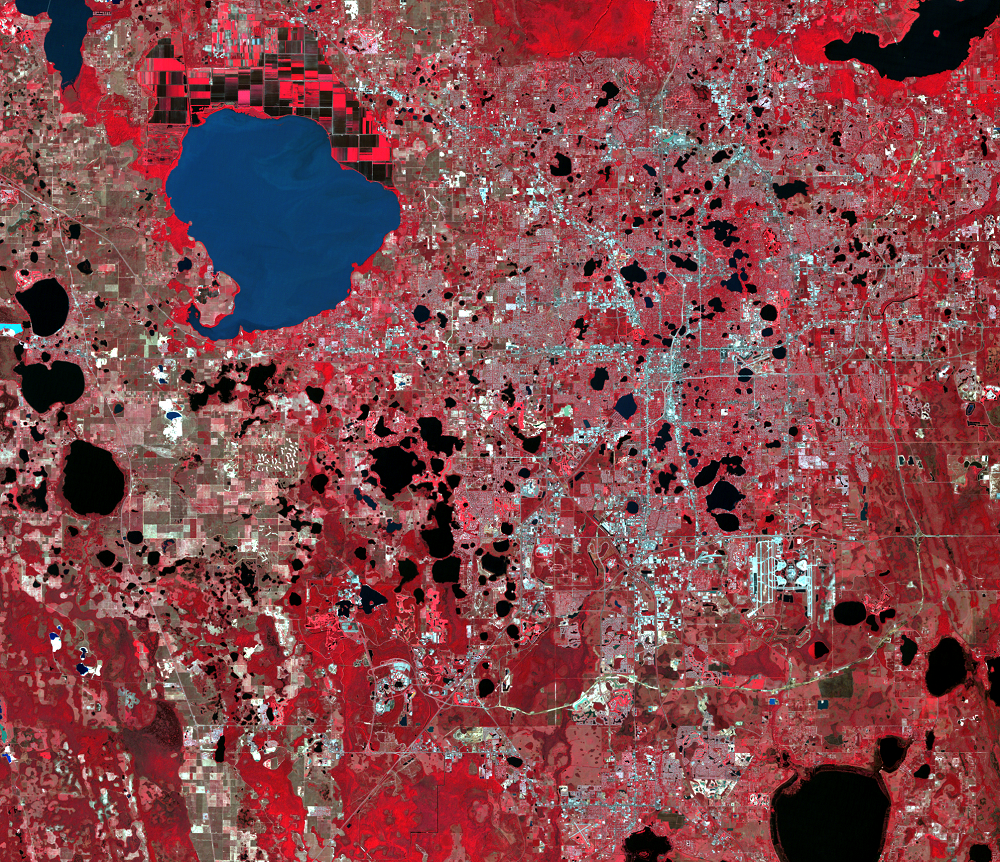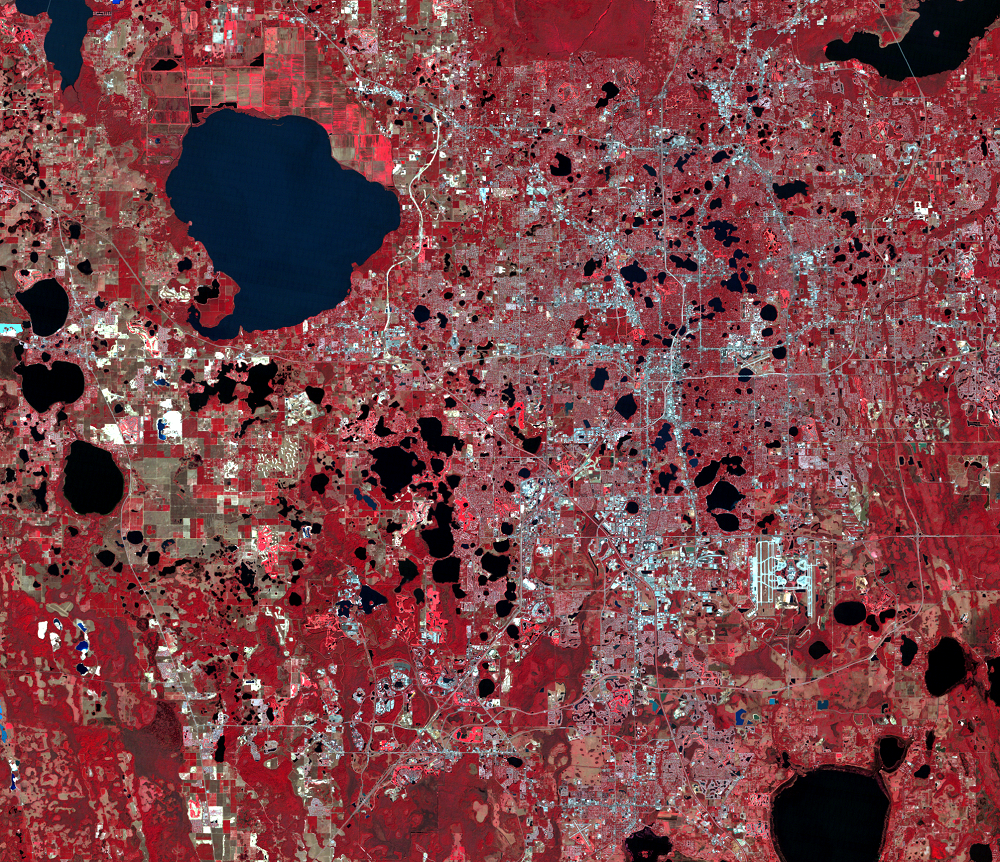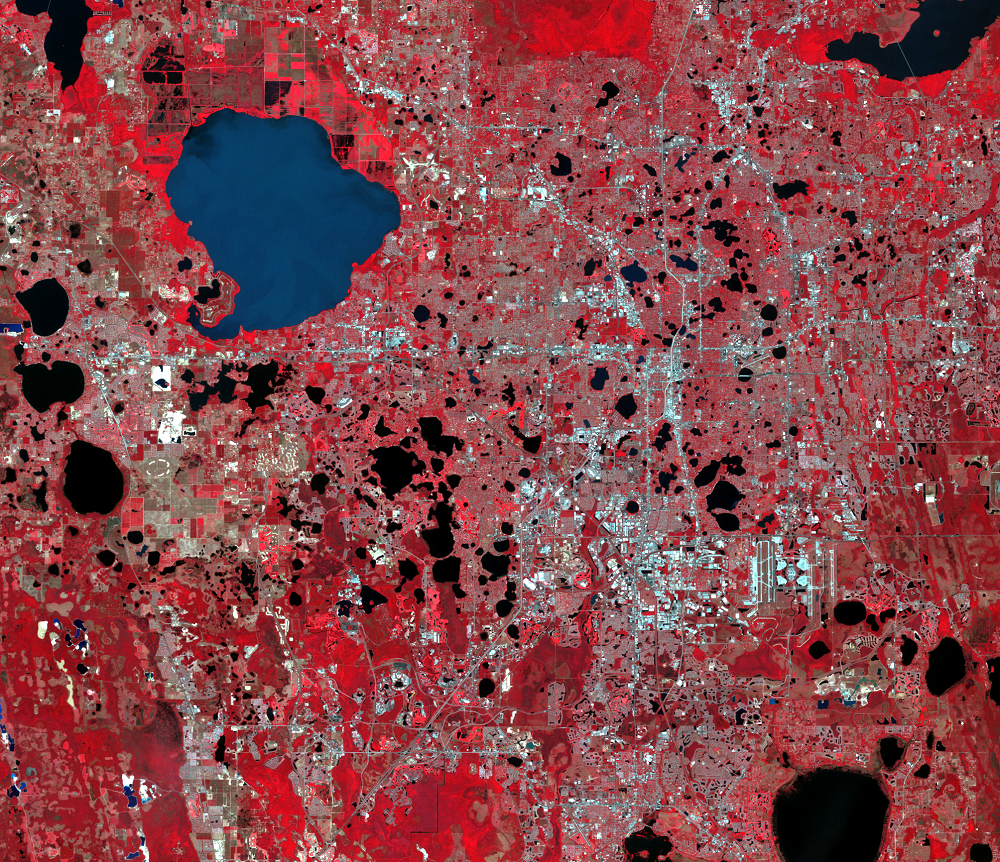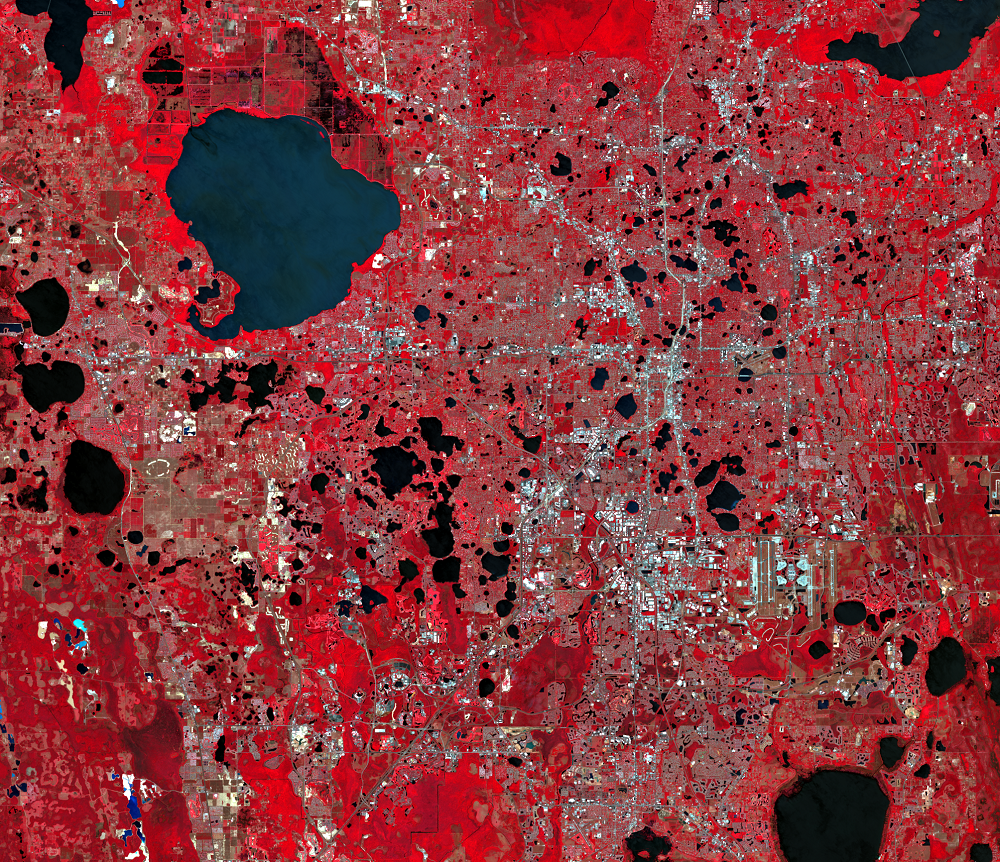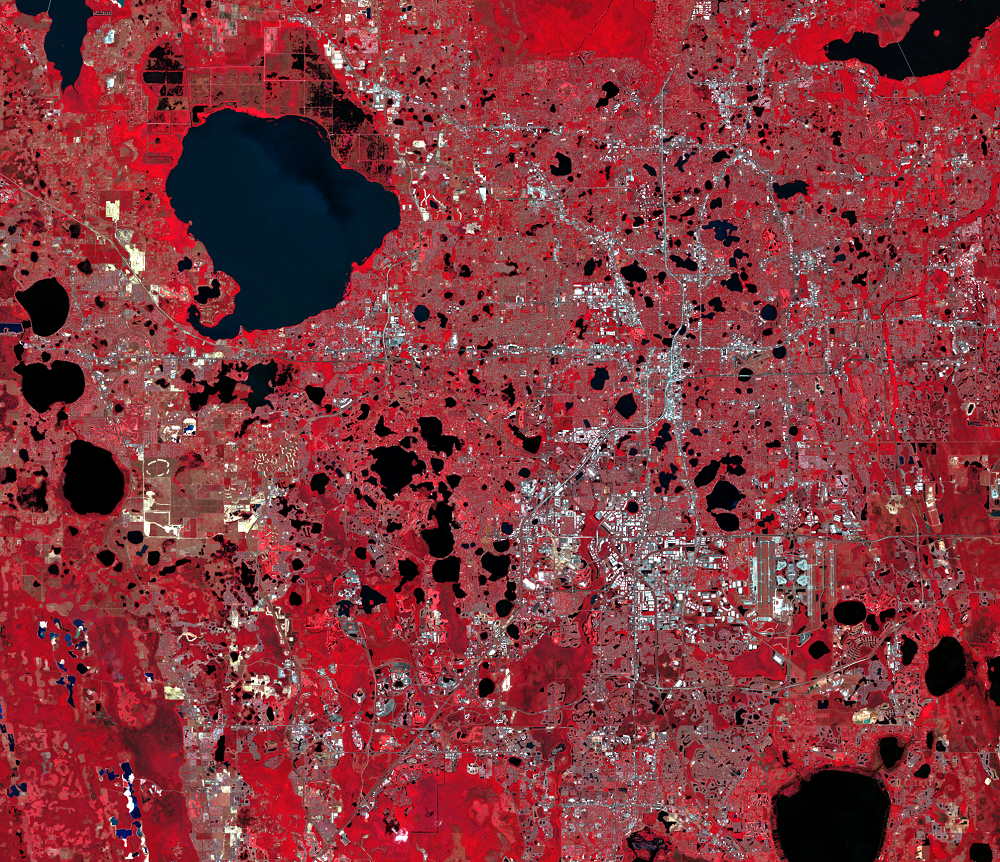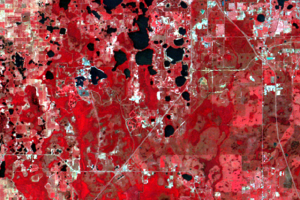The physical growth of Orlando, Florida, especially to the east and south, is apparent in these images. Builders in the area have to plan construction carefully because this land is karstic. Karst terrain is characterized by springs, caves, sinkholes, and a unique hydrogeology that results in aquifers that are highly productive but extremely vulnerable to contamination.
The term karstic comes from Karst, a region in the Balkans whose underlying rock is limestone, which slowly dissolves in the groundwater giving it a distinctive terrain and water cycle. Karstic lands comprise 5 to 10 percent of the Earth's land surface, where oceans have retreated as they did in Florida. Millions of years ago, Florida was under water; calcium crystals and seashells sank to this ocean floor and gradually compacted into hard limestone. As the ocean dropped, Florida became covered by plants and soil, and subject to rainwater.
Imagery
Every picture has a story to tell
Correlated
Additional story information
Downloads
Florida Industrial and Phosphate Research Institute, 2010, Phosphate Primer: FIPR Web page at http://www.fipr.state.fl.us/about-us/phosphate-primer. (Accessed November 16, 2012.)
Guilbert, J.M., and Park, C.F. Jr., 2007, The Geology of Ore Deposits: Long Grove, IL: Waveland Press, 985 p.
Handfelt, L.D., and Attwooll, W.J., 1988, Exploration of Karst Conditions in Central Florida, in Sitar, N., ed., Geotechnical Aspects of Karst Terrains—Exploration, Foundation Design and Performance, and Remedial Measures (Geotechnical Special Publication No. 14): New York, American Society of Civil Engineers, p. 40–52.
Harben, P.W., and Bates, R.L., 1984, Phosphate Rock, in Geology of the Nonmetallics: New York, Metal Bulletin Inc., p. 170–190.
Klein, J., 1996, Gypsum Finds Ecological Concerns Stacked Against It: Tampa Bay Business Journal, available online at http://www.bizjournals.com/tampabay/stories/1996/12/09/focus2.html?page…. (Accessed November 16, 2012.)
Lane, E., 1986, Karst in Florida (Special Publication no. 29): Tallahassee, Florida Geological Survey, 100 p.
Lewelling, B.R., and Wylie, R.W., 1993, Hydrology and Water Quality of Unmined and Reclaimed Basins in Phosphate-Mining Areas, West-Central Florida: USGS Water Resources Investigations Report 93–4002, 93 p.
Stachell, M., 1995, Sinkholes and Stacks—Neighbors Claim Florida's Phosphate Mines are a Hazard: U.S. News and World Report, v. 118, no. 23, p. 53–56.
USGS, 2012, Karst and the USGS: USGS Groundwater Information Web page at http://water.usgs.gov/ogw/karst/index. (Accessed November 14, 2012.)
Van Kauwenbergh, S.J., Cathcart, J.B., and McClellan, G.H., 1990, Mineralogy and Alteration of the Phosphate Deposits of Florida: USGS Bulletin 1914, 46 p.


